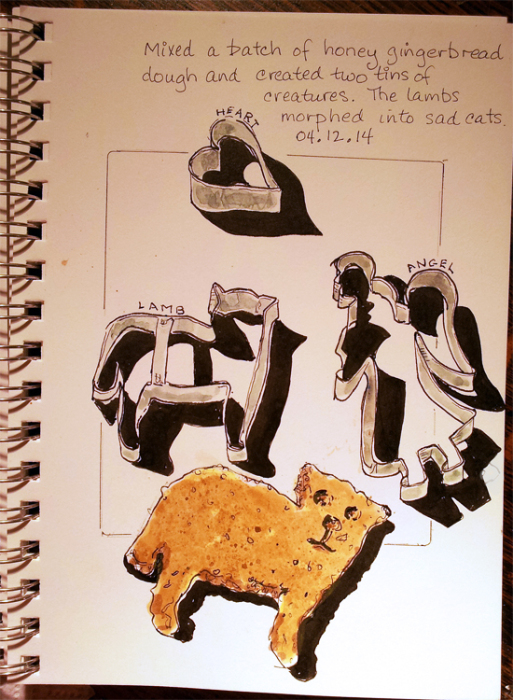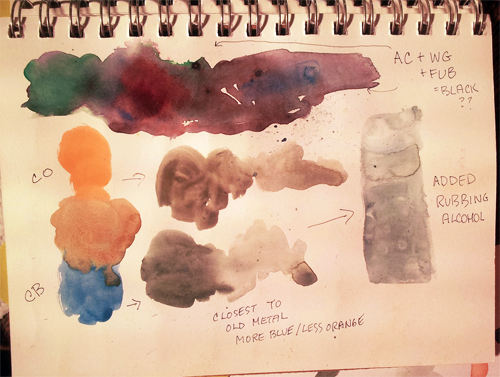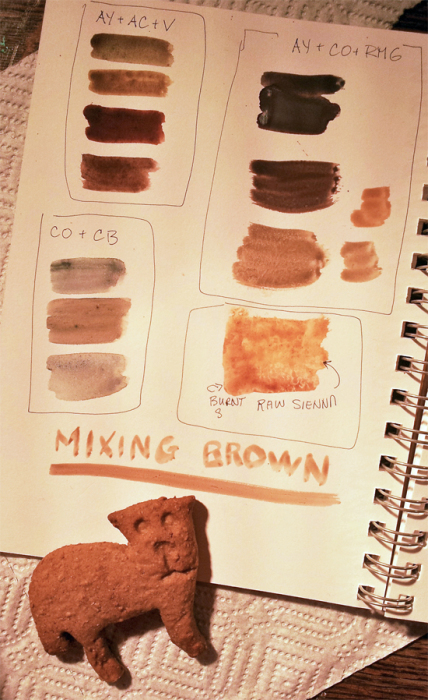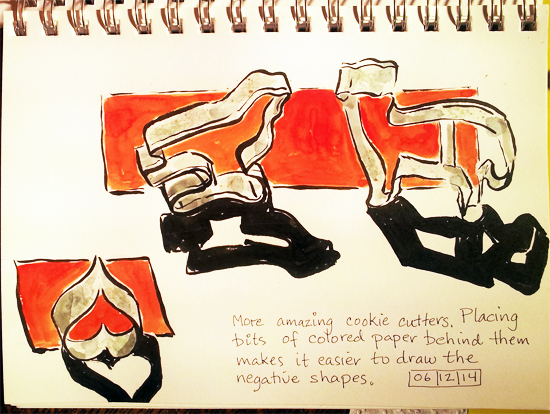I am not a baker. Christmas is the only time of the year that I fire up enough enthusiasm to generate a double batch of sugar free gingerbread dough and three loaves of braided fruit bread. I’m in awe of some of my family and friends who turn out exquisite looking holiday goodies with names such as Stolen, Springerle and Zimtsterne.
The gingerbread cookies, filled with honey, molasses, butter, nutmeg, allspice and ginger are pretty tasty when decorated with bits of royal icing, and the bread, moist and heavy with whole wheat flour, eggs, raisins and currants is the centerpiece for our Christmas morning breakfast. By the time they’re baked, the counters and dishes are washed, the floor swept and the cookie cutters spill across the counter, drying, I am done. My need to bake is satisfied for another year.
Then my attention shifts, noticing the wonderful shadows the old metal shapes create in contrast to the white counter, calling out to be recorded with my pen and sketchbook.
Many of the cookie cutters are old. I’m not sure of the era, but they have a quaintness to them that pleases me. Unlike the more modern aluminum and plastic cookie cutters, the earlier ones were formed with tin and their handles held in place with wee dots of solder. Some of the metal darkens over time while other parts glimmer with patina. I mixed cadmium orange and colbalt blue to concoct a rustic gray and experimented with dotting the paint with rubbing alcohol to alter the finish.
The wonderful lamb cookie cutter, drawn in the first image above, produced a series of sad cat cookies, probably because I was frustrated with little dough legs getting stuck in their metal forms and bored with repetitive cutting. To entertain myself, I drew on the animals with the end of a dough beater, which resulted in the most unsheeplike faces once cooked.
Creating the the golden brown of the cooked gingerbread took a while but messing around with cobalt blue, rose madder genuine and aureolin yellow produced the warm tones I was looking for.
If you’re finding it difficult to draw everyday items, such as cookie cutters, try placing colored paper behind them to create negative spaces and angles, which are much easier to draw. For an example, see the red in the image below.



